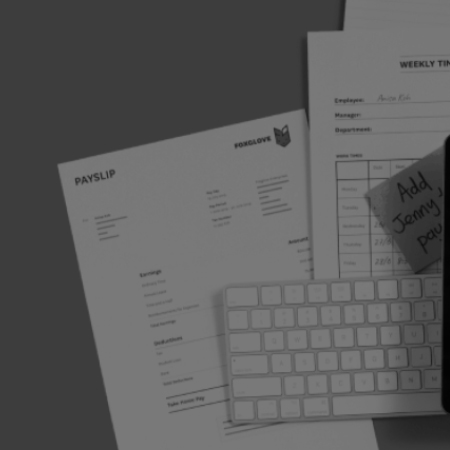Making sure that your payroll liabilities are accurate
Whether you process your payroll in house or outsource it, you should be checking the balances on your payroll control accounts each month to ensure that the numbers in your accounts are accurate.
The three payroll control accounts you should have are:
- Net wages and salaries
- PAYE & NI liability
- Pension liability
As you record your payroll costs it will create a balance in these accounts and as you pay those amounts from your bank it should reduce the liability.
Consequently for your net wages and salaries account, if you operate a monthly payroll and pay all of your staff at the end of the month, then the balance on the account should be zero at the end of the month.
Most organizations pay their liabilities to HMRC and their pension provider in the following month after payroll. So for the March payroll, it will be paid in April.
This means that at the end of March the amount on the balance sheet for the PAYE & NI liability account should match the amounts owed to HMRC from the March payroll and the amount on the balance sheet for the Pension liability account should match the amounts owed to the pension provider from the March payroll. Then when it’s paid in April the balances should clear down to zero.
Trouble shooting
If the balances don’t match as they should then it’s time for some detective work. Here’s a few hints about where to start looking.
For all of the codes a good starting point is to look for the last month when it cleared back down to zero to find the month where it went wrong.
Net wages and salaries
Get that month’s payroll file and compare the net pay for each employee to what was paid out of the bank, was someone paid incorrectly?
PAYE & NI liability
A common cause of accounting errors is to have separate liability codes for NI, PAYE and Student loans set up. However as you only make one single payment to HMRC for all of these elements it’s often easier to merge them all into one code. I’ve seen situations where the Student loan liability code is showing that months and months of student loans haven’t been paid to HMRC but the PAYE code is showing that HMRC has been paid too much and then when you merge them it offsets and shows a zero balance over all.
It’s not uncommon for the employment allowance to be incorrectly recorded. If it is already netted off the amount you need to pay to HMRC in your payroll files each month you don’t also need to record a manual journal for it too, has it perhaps been duplicated therefore causing the imbalance in the accounts?
It’s also a good idea to log into your business tax account with HMRC to see what they have recorded as your liability.
Pension liability
Has the wrong amount been paid to your pension provider? If you manually key in the pension amounts on your pension provider’s website perhaps you mis-keyed a number and so the amount they collected by direct debit doesn’t match what’s on your payroll. You might need to correct the data submitted to your pension provider.
How often should you be checking this?
These are simple checks you can do each month and keeping on top of them monthly will help you to maintain accurate accounts throughout the year.
Waiting until the end of the year to check it means that you potentially have 12 months worth of data to check if something does go wrong. It’s much easier to just check the most recent month and then if something has gone wrong you can learn from it and change your process.
Check out our other blogs for our top tips.

